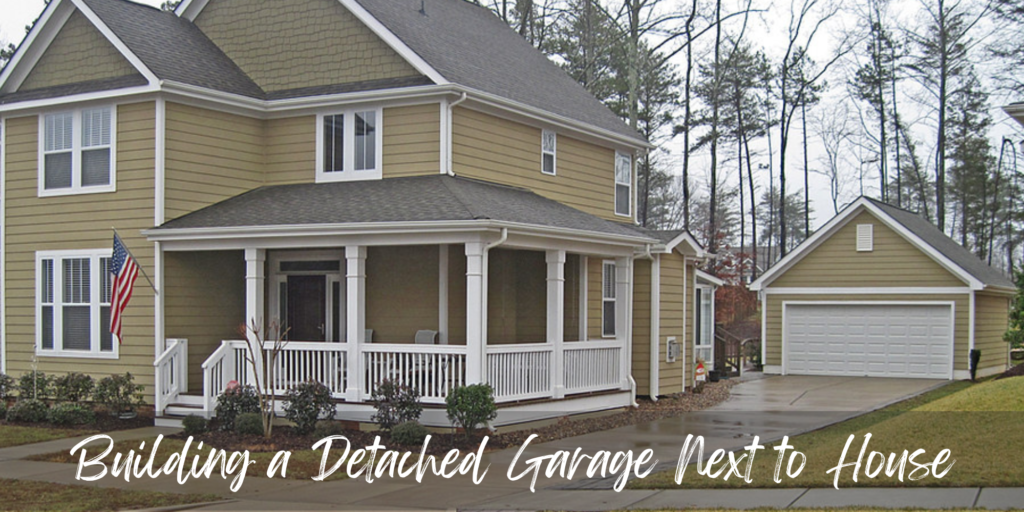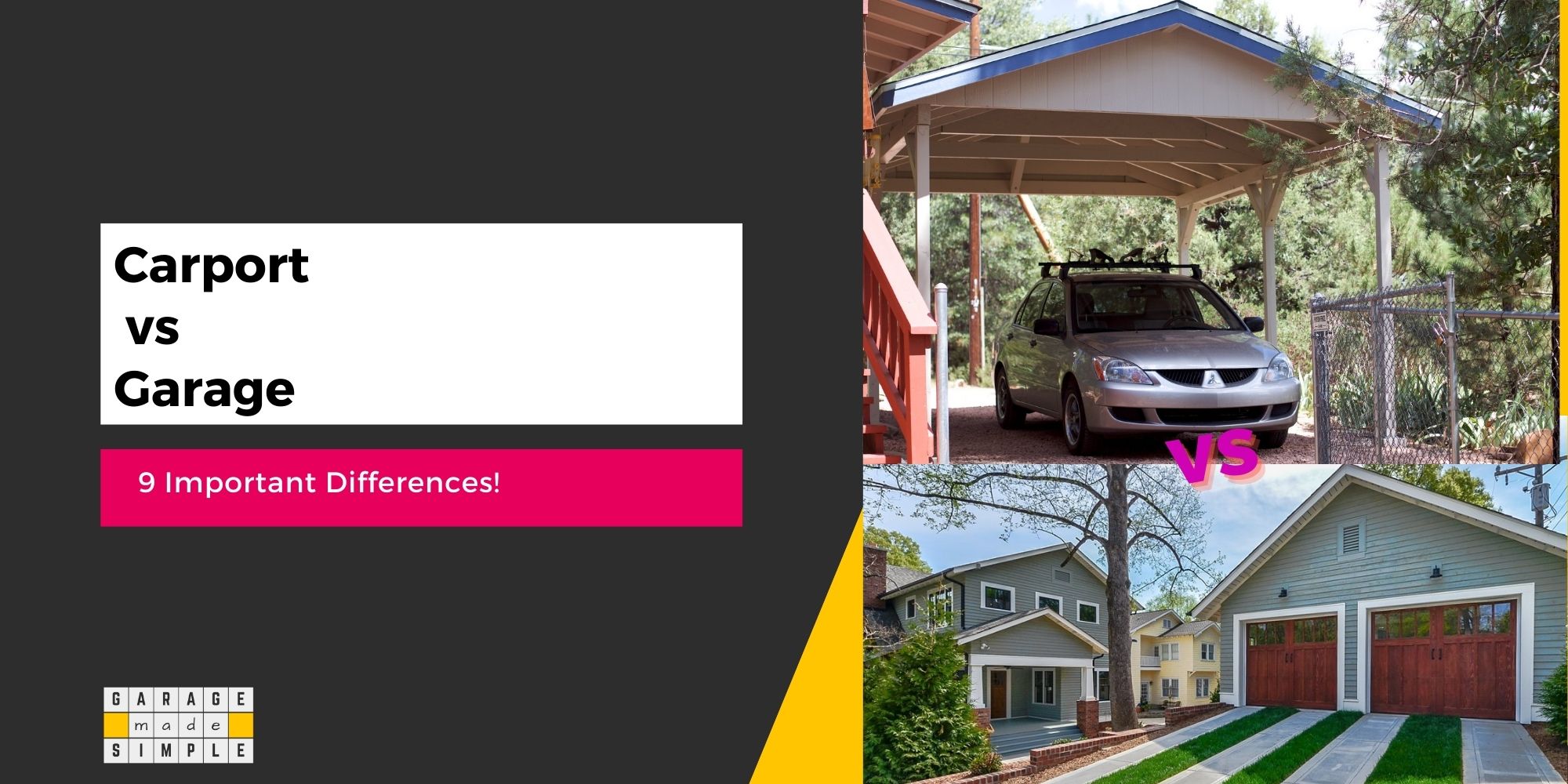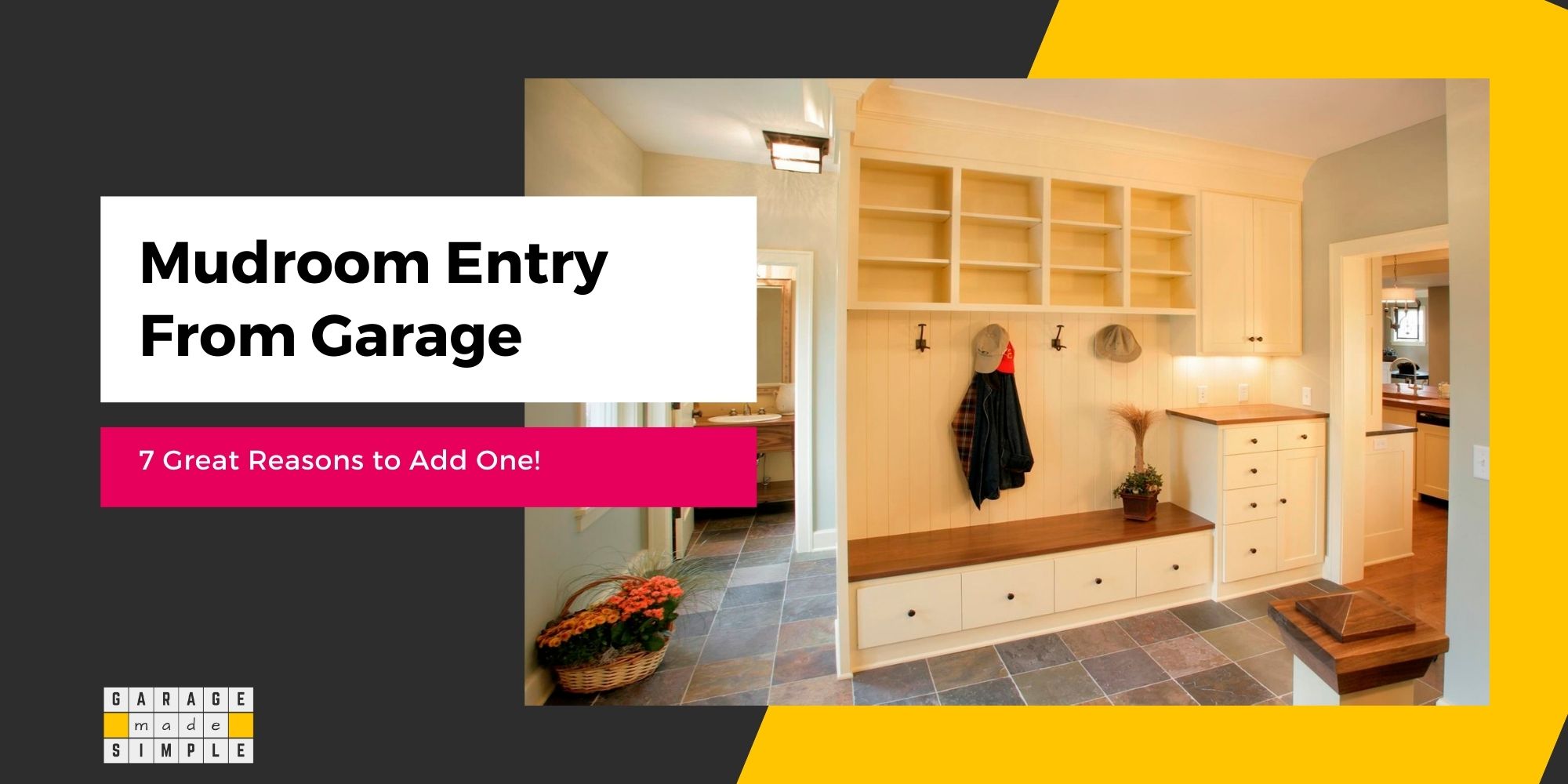7 Must-Knows for Your Detached Garage Next to House
garagemadesimple.com is a participant in the Amazon Services LLC Associates Program, an affiliate advertising program designed to provide a means for sites to earn advertising fees by advertising and linking to Amazon.com . The website is also an affiliate of a few other brands.
Planning to build your dream residence on a vacant lot or just adding a new garage to an existing house? The detached garage next to house placement and construction opens up endless possibilities.
Building an aesthetically pleasing and functionally efficient detached garage next to your house takes a lot more planning and effort than you might initially think. As you embark on the journey, from concept to construction, you will need to be aware of several factors that will influence the ultimate outcome.

In this article, I will delve deep into the essentials, providing you with seven crucial factors that you must keep in mind. I will help you transform your vision of an ideal detached garage into a solid, stylish reality.
Key Takeaways: Building a Detached Garage Next To House
- Building a detached garage next to house involves careful planning and consideration of 7 important factors.
- Clearly define the purpose of the garage, as it dictates size, layout, and essential elements like lighting and ventilation.
- Choose the garage location wisely, balancing accessibility with local regulations and aesthetics.
- Prioritize structural integrity, ensuring a strong foundation and high-quality construction materials for long-term durability.
- Maintain visual harmony by matching architectural styles, materials, and color palettes with the main house.
- Consider sunlight and ventilation needs for both the garage and the house.
- Plan for essential utilities, including electricity, drainage, and insulation, to create a functional and comfortable space.
- Adhere to local building codes and regulations, such as, zoning laws, setback rules, height restrictions, fire safety codes, electrical codes, plumbing codes, etc.
Let’s get going.
1. Planned Use for Your Detached Garage Next to House
The first crucial step in planning and building your dream detached garage next to your house is clearly defining its purpose. Parking your cars there may not even be the primary purpose.
Maybe you want to build a workshop there so that you can focus on your favorite DIY projects in peace. Maybe the primary purpose is to build a garage gym for staying fit.
Each purpose demands specific features and layouts. Clearly outlining the detached garage’s function sets the stage for every subsequent decision in the design and construction process.
The planned use not only dictates the garage’s size, layout and location but also influences essential elements such as lighting, ventilation, and utility requirements.
2. Picking the Best Location for Your Detached Garage
Choosing the right location for your detached garage is pivotal and irreversible. So you must prioritize accessibility and convenience. Consider the proximity to the main house.
Being close will not only increase accessibility and convenience, but will also reduce the cost of connecting utilities between the house and garage. However, being too close will negate the specific advantages of a detached garage.
The actual location of the detached garage may have an impact on the curb appeal and the valuation of your home. Here are 4 options to consider, depending on the layout of your lot.
Detached Garage at the End of the Lot
- Ideal for maximizing backyard space, especially in wide yet shallow lots.
- Placement can be a safe distance from the property line and therefore regulation compliant.
- Great for construction of larger garages.
- Potential drawback: Inconvenient as it requires a longer walk from the house.
Detached Garage with Doors Behind The House Back Line
- Placing the garage a few feet behind the back of the house complies with local building codes.
- Shortens the driveway, conserving both space and costs.
- Facilitates easy access and encourages versatile use of the backyard space.
- Offers flexibility in creating diverse outdoor living areas between the house and the garage.
Detached Garage Beside The House
- Suitable for lots with ample width but limited depth, creating a visually appealing facade.
- Emphasizes the house’s aesthetics by recessing the garage’s front. Attention is drawn away from the garage and onto the house.
- Integration through a covered patio or breezeway can ensure seamless alignment between the house and the garage.
- Maximizes lot width while maintaining an attractive overall appearance.
Detached Garage Behind The House
- Uncommon but effective placement choice, allowing the house’s front to be the focal point.
- Garage doors can be parallel to the driveway, simplifying parking and enhancing functionality.
- Accommodates multiple-car garages effortlessly, ideal for deep but not overly wide lots.
- Requires a long driveway; narrow design can mitigate this drawback, optimizing space usage.
While picking the location of your detached garage you have to be mindful of the local building code and regulations. Familiarize yourself with zoning laws and building codes in your area.
Additionally, think about the visual impact of the new detached garage next to the house. Ultimately, the choice of the garage location will require you to balance practicality, legal requirements, and aesthetics.
3. Ensuring Strength & Stability Through Good Structural Design
The structural integrity of your detached garage is non-negotiable. It’s the backbone that ensures longevity and safety. Begin with the garage foundation – it should be robust enough to support the weight of vehicles and handle ground movement.
Consulting a structural engineer at this stage is prudent; their expertise ensures the foundation’s adequacy and resilience against the test of time.
Using the best concrete mix, adequate steel rebar reinforcement and a concrete slab thickness of 4”-6” on a well prepared base will give your detached garage a strong and stable foundation to stand on. Make sure to use pressure treated sill plates and high quality 2X4 SPF studs for the garage walls.
The design of trusses and roof sheathing are equally vital. Choose design and materials that can withstand local weather conditions, be it heavy snowfall, torrential rains, powerful hurricanes or scorching heat.
Do not compromise on the quality of materials. High-quality construction materials may come at a higher initial cost, but they pay off in the long run through reduced maintenance and repairs.
A structurally sound garage ensures that your investment stands strong for years, providing a secure space for your belongings and activities.
4. Crafting a Harmonious Visual Design
Visually, the design of the detached garage must have an integration and cohesive look with that of the house.
The basic architectural style of the garage must be the same as that of the main house. So if your house is built in the craftsman architectural style then the detached garage must also be built craftsman architectural style.
Consistency in design is the key to a visually pleasing and harmonious look. You can still create discord, if you do not use the same materials and finishes on both structures. So, opt for materials that echo those used in your house.
Ensuring a seamless blend involves coordinating the garage’s color palette with that of the main dwelling. It’s essential to pay attention to finer details, like matching the garage siding and trim color with that of the main house.
Installing garage door exterior lights that are the same as that on the entrance door of the main house is another way of maintaining consistency. This meticulous approach results in a harmonious facade, where every element complements and enhances the overall aesthetic cohesion.
5. Importance of Sunlight & Ventilation for Both Garage & House
The positioning of the detached garage in relation to your house should take into account the sunlight and ventilation needs of the house.
In sunny, hot climates, shielding your house from harsh afternoon sun by strategically placing the garage can create shaded areas, offering a cooler outdoor living space. Conversely, in locations with long winters and limited sunlight, a different approach might be necessary.
However, this traditional logic shifts when considering solar power panels. To optimize solar energy generation, it’s essential for both the house and garage roofs to face south or southwest, allowing for maximum placement of solar panels.
The detached garage must also have access to adequate sunlight and natural ventilation. Both these factors are important to discourage dampness and mold growth. Optimal ventilation ensures the garage remains odor-free and pest-free, essential for longevity of your vehicles and other stored items.
Additionally, well-ventilated garages contribute to the overall air quality of your property, promoting a healthier environment for everyone.
There are a number of garage ventilation options, such as windows, wall and roof vents, exhaust fans, etc, that you can incorporate in the design of the detached garage next to the house.
6. Planning for Electricity, Drainage & Insulation
The detached garage will need utilities like electricity and drainage to be functional.
You will need to install an electrical subpanel in the detached garage which will be fed from the main panel in the house. The garage will need to be wired to distribute power to the garage door opener, the garage interior and exterior lights and receptacles for plugging in tools and appliances.
Drainage solutions for the detached garage must be built into the design to ensure that the garage does not get flooded after a downpour. Consider building the garage such that the driveway slopes down from the garage door. The garage floor must also slope towards the garage door.
Garage floor water diverters such as driveway drains and french drains may need to be incorporated in the garage design.
In most climates, and especially in really cold climates, adequate insulation is a game-changer. Proper insulation keeps the garage warm in winter and cool in summer, while minimizing energy consumption.
A well insulated detached garage makes it easier to get a climate controlled garage. Insulation is essential for creating a comfortable environment for various garage activities and safeguarding stored items from extreme temperatures.
7. Local Building Code Compliance
Of course, at every stage of the planning, design and construction stages of the detached garage next to the house, you will need to understand and adhere to the local building codes. This is non-negotiable as you can’t even get a building permit without code compliance.
Some codes (there could be more in your specific location) that you might be required to comply with, include:
- Zoning Codes: These regulations dictate how land can be used in specific areas.
- Setback Regulations: Setback rules define how far structures must be situated from property lines.
- Height Restrictions: Building codes often limit the height of structures to maintain uniformity.
- Fire Safety Codes: These codes outline requirements for use of fire-resistant materials, and safe egress in case of fire.
- Electrical Codes: Regulations for wiring, outlets, and electrical systems to guarantee safety and to prevent electrical hazards.
- Plumbing Codes: Plumbing codes detail the standards for water supply, drainage, and sewage systems, ensuring proper sanitation and water safety.
- Insulation and Energy Codes: These codes set standards for insulation, ventilation, and air conditioning (HVAC) systems to promote energy conservation.
- Accessibility Codes: Ensures that the garage is accessible to individuals with disabilities, specifying features like ramps and wider doorways.
- Environmental Codes: Regulations concerning environmental impact, such as stormwater management, eco-friendly materials, and tree preservation.
- Historical Preservation Codes: Relevant if your property is in a historically preserved area.
Failure to comply with codes can result in costly fines, delays, or even the demolition of your structure. So, do consult with your local municipality or a professional architect or contractor to get precise and updated information regarding the applicable building codes in your specific area.
Thank you very much for reading the post. I do hope you found it informative and useful.






